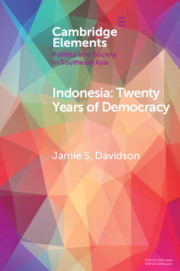Element contents
Indonesia
Published online by Cambridge University Press: 11 August 2018
Summary
- Type
- Element
- Information
- Online ISBN: 9781108686518Publisher: Cambridge University PressPrint publication: 16 August 2018
References
References
- BIES:
Bulletin of Indonesian Economic Studies
- BKI:
Bijdragen tot de Taal-, land-, en Volkenkunde
- CSEAPP:
Cornell Southeast Asia Program Publications
- ISEAS:
Institute of Southeast Asian Studies
- NUS:
National University of Singapore
- SEAR:
South East Asia Research
Bulletin of Indonesian Economic Studies
Bijdragen tot de Taal-, land-, en Volkenkunde
Cornell Southeast Asia Program Publications
Institute of Southeast Asian Studies
National University of Singapore
South East Asia Research
- 27
- Cited by



